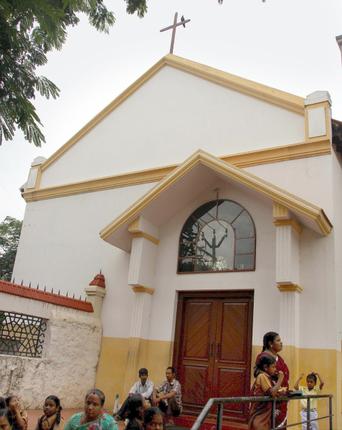
In the 360th year of Armenian presence in the city Anusha Parthasarathy visits monuments and streets associated with this trading community
If you walk along Armenian Street today, it is vastly different from the time when the merchantmen of Madras occupied it. Street stalls are buzzing with business, bikes are parked right along the road and where they are not, cars squeeze in. A sea of people trundle down the narrow road, and yet no one turns to even take a look at an old arched entranceway, sharing its wall with a crowded fast-food joint. The Armenians, who established a thriving settlement in Madras in the 1600s, will celebrate the 360th year of their presence in the city in September this year.
The earliest existence of Armenians in India dates back to the late 8th Century. A man called Thomas Cana, arrived along the Malabar Coast in 780 AD. According to Portraits of Hope: Armenians in the Contemporary World by Huberta Von Voss, not much is known about his origin or mission but he was lauded as someone who worked for the rebirth of Christianity. The Armenian presence in Madras however, became rather eminent in the 1660s. Madras: The Land, The People and Their Governanceby S. Muthiah points out that the earliest Armenian tombstone dates back to 1663 and is of Coja David Margar. This was found near Little Mount. Hurberta Von Voss’ book though, also says that the Armenians of Madras were the first to discover the sepulchre of St. Thomas upon the Mount and took the Portuguese there in the 16th Century. In fact, it is popular knowledge that the church atop the Mount served as a lighthouse to guide Portuguese and Armenian ships around that time.
Even if there is no record of when exactly Armenians settled here, it was clear that they monopolised trade between India and West Asia on the one hand and Manila, a Spanish bastion then, on the other (according to S. Muthiah’s Madras: The Land, The People and Their Governance). They traded mainly in silk, spices and gems. In fact, the last Armenian to live here was Michael Stephen, who left the city a few years ago. And now, only a church, a street named after the community and a few lesser-known relics carry their stories.
The most visible Armenian monument in Chennai is the much-written about Armenian church, which was first built in 1712 and later rebuilt after the French siege in 1772. The first church was built of timber in the present High Court area with permission from the East India Company. The Armenians were given 50 pounds to manage the expenses of the church. This encouraged more traders to settle in and around the area. Vestiges of Old Madras by H.D. Love points out that the earliest Armenian church, situated in Old Black Town, as shown in Thomas Pitt’s map, was probably built shortly after the Company entered into a covenant with the Armenian residents in India. The new church, however, was consecrated in Aga Shawmier’s chapel grounds in George Town. The street on which the church is situated continues to be called the Armenian Street, where the settlers once lived.
Perhaps the most famous Armenian in Madras was Coja Petrus Uscan, who is remembered for constructing or donating to the many remaining Armenian relics in the city. S. Muthiah’s book says that he was the heir of a family that had trade relations with the East for generations. But he settled in Madras only in 1723, on his return from Manila. A philanthropist, he contributed to several religious institutions in Madras.
Significant inscription
Santhome High Road isn’t a place where one can wind back time. Cars rush past at breakneck speed and there is no time to stop and stare, even if the object of concern is a three-century-old Armenian inscription that faces the road. Just at the edge of San Thome Matriculation Higher Secondary School is St. Rita’s church (now chapel), towards which Uscan donated liberally. It was built by Armenians and an inscription on its east wall, in Armenian characters, says In Memory of the Armenian Nation, 1729. H.D. Love’s book points out that the event commemorated was the opening of the grave of St. Thomas, which took place in April 1729, to which Uscan was a witness.

Another inscription in Portuguese in the same church shows that it was partially rebuilt in 1740. The church, now a part of the school, is not on the mainstream heritage map.
(To be continued…)
source: http://www.thehindu.com / The Hindu / Home> Features>MetroPlus / by Anusha Parthasarthy / Chennai – July 30th, 2013







